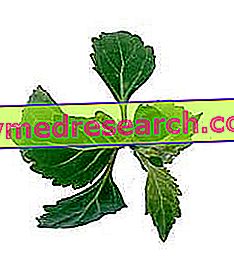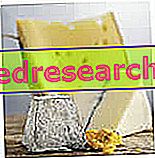Origin and diffusion
Known in botany as Pogostemon patchouly or Pogostemon heyneanus, patchouli is a bushy suffrutice belonging to the Labiate family, originating in Malaysia, tropical Asia in general and Oceania. Currently, patchouli is widely cultivated in India, China and the Philippines; quite widespread also in West Africa.
Botanical description

Essential oil extraction
The importance of patchouli lies in its essential oil, very fragrant and particularly prized in cosmetics. Like most essences, patchouli essential oil is extracted by fractional steam distillation of its green components (stem, leaves, etc.). The aroma of essential oil is very strong and intense; it resembles that of coumarin, an aromatic compound with a benzopyranic structure. The essence is characterized by a sesquiterpenic chain alcohol, known as patchoulol, which characterizes patchouli; among the other active ingredients found in the phytocomplex, we also mention norpatchoulenolo, bulnesol and pogostolo. Another component is patchoulene, which boasts the same beneficial properties of chamomile azulene: applying it to the skin, after diluting it in a fat matrix, patchoulene appears to perform healing properties for wounds.
The benzaldehyde and cinnamon aldehydes found in the patchouli phytocomplex are widely used in the medical sphere as adjuvants to therapy against yeast infections.
Practice used in the process of extraction and purification of volatile and sensitive components, at high temperatures, from officinal plants: these thermolabile substances (eg terpenes), tend to degrade when subjected to temperatures close to their boiling point. To overcome this drawback, the vegetable matrices, rich in active ingredients, are distilled in a steam current: in the aforementioned extraction practice, the only solvent capable of extracting the active ingredients is water, capable of breaking the plant apparatuses which they contain thanks to the temperature.
Uses of the essence of patchouli
Patchouli essential oil is widely used in cosmetics, thanks to its particularly intense and strong perfume: it seems that the olfactory vibration made by the phytocomplex is used as a mild anxiolytic, useful for fighting states of anxiety and tension.
Patchouli alcoholic extract has moderately anti-inflammatory, anti-edema and venous decongestant properties; in the East, patchouli essential oil is widely used also in the medical field to counter rheumatic, joint, headache, stomach pain and nausea.
The essence of patchouli is used in the perfume sector as a regenerating, refreshing and balancing agent; some authors venture to attribute even mild aphrodisiac properties to the phytocomplex.
In countries such as Japan and Malaysia, patchouli extract is considered an effective antidote against snake venom.
The active ingredients extracted from patchouli leaves are used as an insecticide and insect repellent, particularly useful against subterranean termites.
The use of the patchouli fragrance as an air freshener is known.
Odd and bizarre patchouli in Asian countries: its extract is used in the food industry as a flavoring for sweets, thanks to its particular and intense fragrance.
The essence of patchouli is also added to fatty matrices (eg sunflower oil, sesame oil, jojoba oil, etc.) for massage oils: in fact, patchouli also boasts revitalizing properties.
Summary
Patchouli: in short
| Patchouli | Bushy Suffrutice belonging to the Labiate family |
| Patchouli origin and cultivation | Originally from Malaysia, tropical Asia in general and Oceania Widely cultivated in India, China and the Philippines; quite widespread also in West Africa. |
| Botanical description of patchouli | Height: 80-100 cm Flowers: bilobate, white with reddish streaks Stem: purple red Leaves: large and ovate Bouquet: intense |
| Patchouli essential oil extraction | Patchouli essential oil is extracted by fractional steam distillation of its green components |
| Chemical characterization of patchouli essential oil |
|
| Uses of patchouli essential oil |
|



